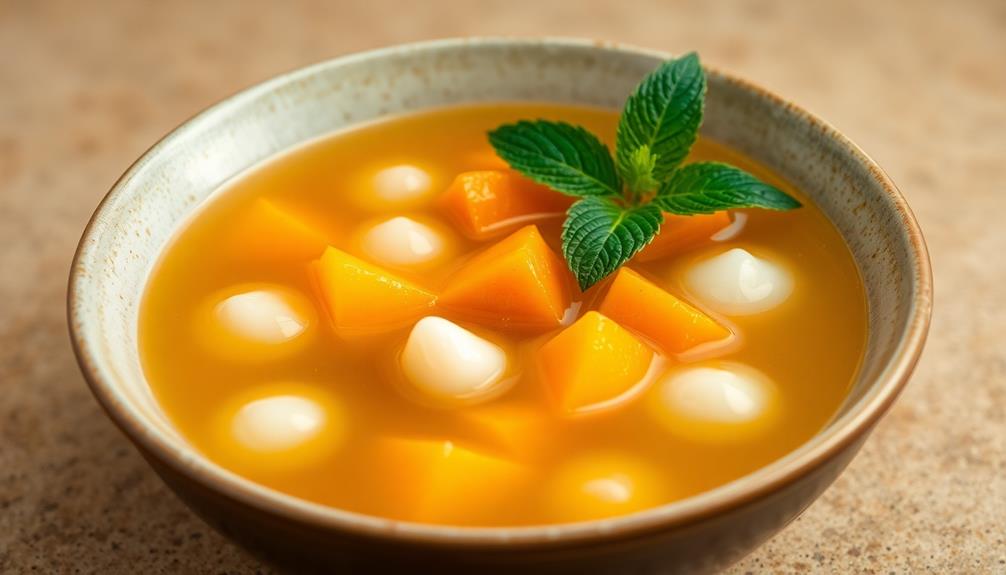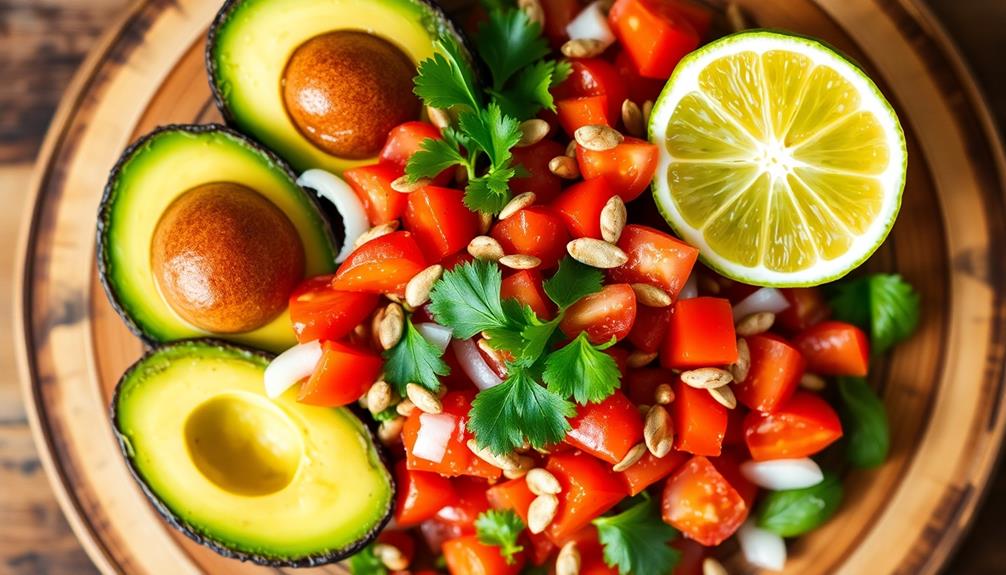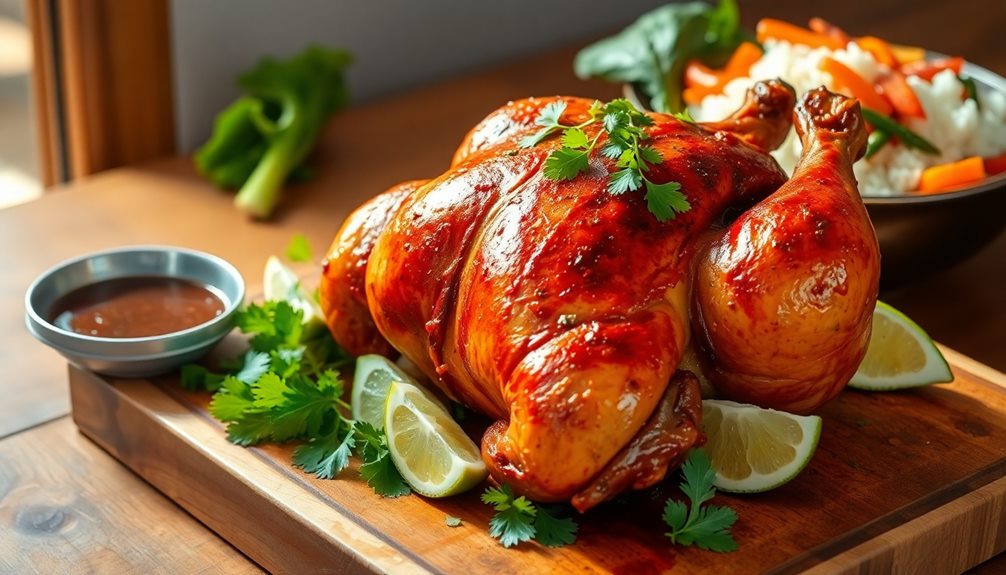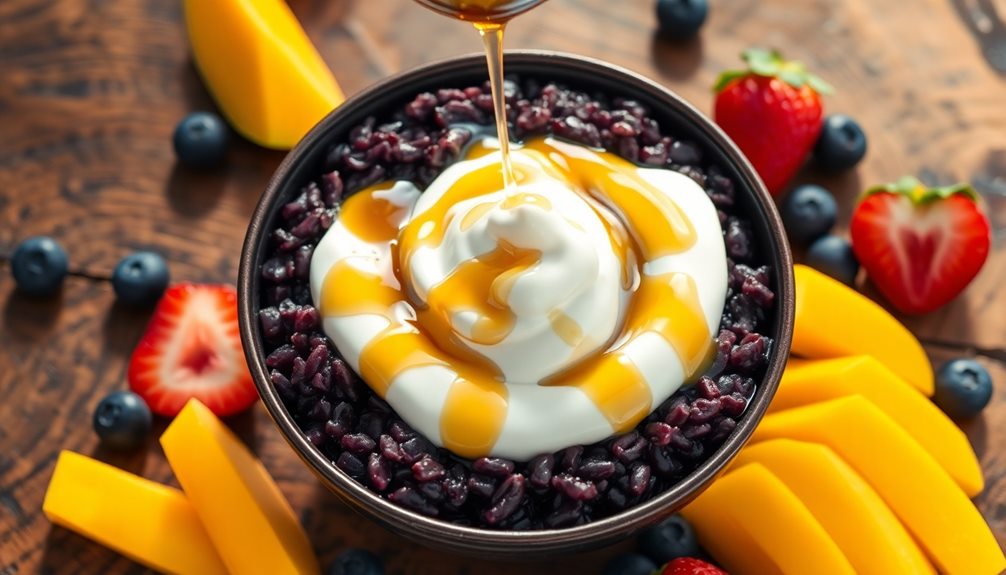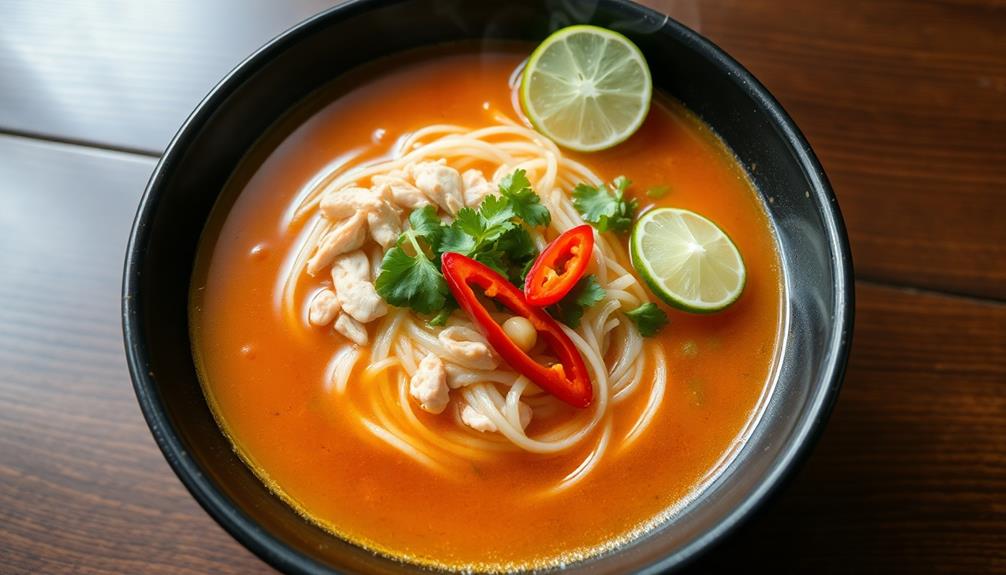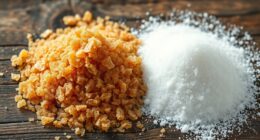Che, the beloved Vietnamese dessert soup, will transport you on a delectable journey through vibrant flavors and textures. This ancient cultural tradition has evolved over centuries, reflecting the country's rich culinary heritage. You'll find che in family gatherings and community events, where it symbolizes comfort, warmth, and hospitality. The creamy coconut milk base is balanced with sweet and savory ingredients like beans, fruits, and tapioca pearls. Customizing che with seasonal ingredients makes it a versatile treat for any occasion. Dive in and discover the joy this comforting dish brings – you're sure to be captivated by its unique charm.
Key Takeaways
- Che is a beloved Vietnamese dessert soup with a rich history and cultural significance, reflecting the country's culinary traditions.
- The dish is characterized by a combination of sweet and savory flavors, featuring ingredients like beans, fruits, and coconut milk.
- Che is traditionally served warm or chilled, often during family gatherings and community events, symbolizing comfort and hospitality.
- The preparation of Che involves soaking, cooking, and combining various base ingredients, creating a creamy and delightful texture.
- Che is a versatile dish that can be customized with seasonal fruits and toppings, making it a popular treat for all occasions.
History
Che, the sweet dessert soup, traces its origins back to ancient Vietnamese culinary traditions. Over the centuries, this beloved dish has evolved, with each region developing its own unique variations. You'll find Che made with an array of ingredients, from fragrant pandan leaves to chewy tapioca pearls. Some versions feature a creamy coconut base, while others showcase the natural sweetness of fruits like jackfruit or longan.
What makes Che so special is the way it brings people together. Families often gather to prepare this communal treat, passing down recipes and techniques from generation to generation. The soothing aroma of simmering Che fills the air, inviting everyone to gather around the table and indulge in a moment of pure delight.
Whether you're savoring a bowl of Che on a hot summer day or enjoying it as a cozy winter comfort food, this timeless dessert soup is sure to leave you feeling warm and satisfied. Its flavors and textures are as diverse as the vibrant culture that created it.
Recipe
Che, also known as sweet dessert soup, is a beloved Vietnamese delicacy. It's a comforting and versatile dish that can be enjoyed as a dessert or a light snack. The combination of various textures and flavors creates a harmonious and satisfying experience.
The origin of Che can be traced back to the rich culinary traditions of Vietnam, where it has been a staple for generations. This dish is often served during special occasions or as a refreshing treat on hot days, reflecting the country's appreciation for the balance between sweet and savory elements in their cuisine.
- 1 cup glutinous rice
- 1/2 cup mung beans, soaked and peeled
- 1/2 cup tapioca pearls
- 1/2 cup sugar
- 1 can (13.5 oz) coconut milk
- 1 teaspoon vanilla extract
- 1/4 teaspoon salt
- Water as needed
In a large pot, soak the glutinous rice and mung beans separately for at least 4 hours or overnight. Drain and rinse them.
In a separate pot, cook the tapioca pearls according to the package instructions until translucent. Drain and set aside.
Combine the soaked glutinous rice, mung beans, tapioca pearls, sugar, coconut milk, vanilla extract, and salt in a large pot. Add water as needed to achieve the desired consistency.
Bring the mixture to a boil, then reduce the heat and simmer, stirring occasionally, for about 30 minutes or until the ingredients are tender and the flavors have blended.
When serving, the Che can be enjoyed warm or chilled. It's recommended to taste and adjust the sweetness to your preference.
This dish can be garnished with additional coconut milk, fresh fruits, or toasted coconut flakes for a more visually appealing and flavorful presentation.
Cooking Steps
First, you'll need to soak the tapioca pearls overnight.
Drain and rinse them well the next day.
Then, combine the tapioca pearls with the rich and creamy coconut milk.
Step 1. Soak Tapioca Pearls Overnight
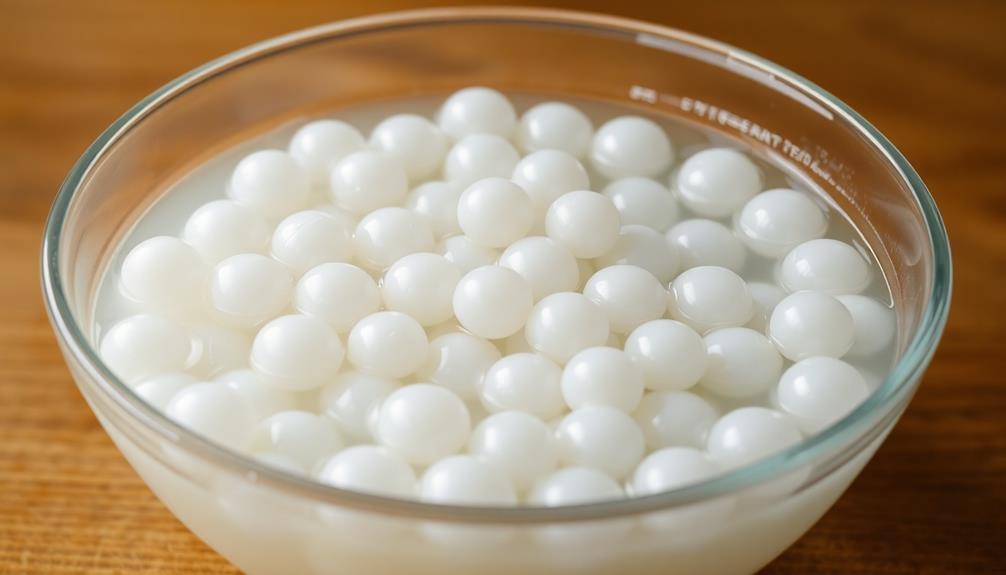
Soak the tapioca pearls overnight in water.
These small, chewy pearls need time to absorb the liquid and soften up before you can use them in your sweet dessert soup.
Find a nice big bowl, pour in the pearls, and then add enough water to cover them completely.
Pop the bowl in the fridge and let it sit overnight.
In the morning, you'll see the pearls have puffed up and turned translucent – they're ready to go!
Drain the pearls and give them a quick rinse.
Now they're all prepped and waiting to be added to the other tasty ingredients in your che.
The soaked pearls will provide a wonderful, bouncy texture that blends perfectly with the sweet broth and fresh fruit.
Just a little bit of simple prep the night before makes all the difference!
Step 2. Drain and Rinse Tapioca Pearls
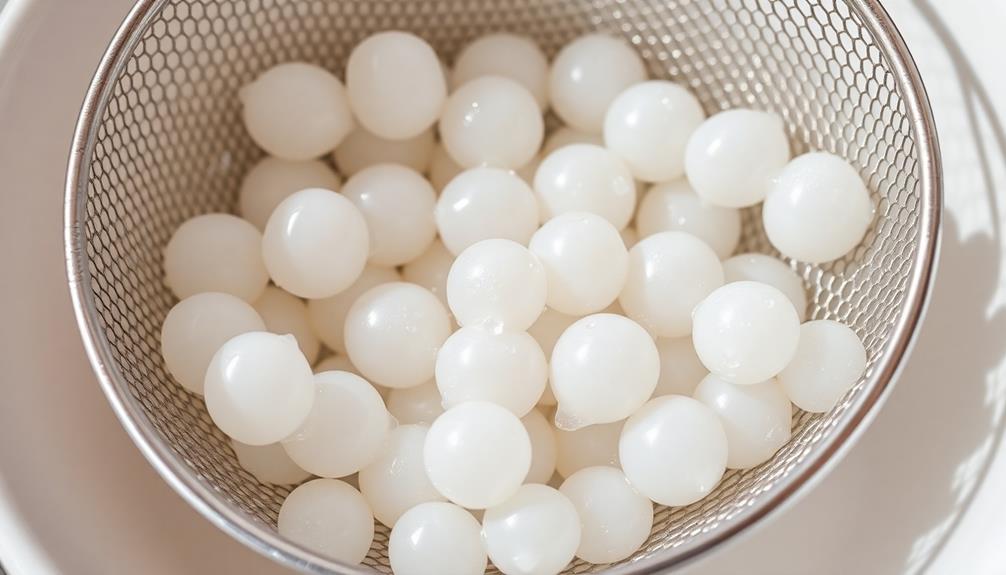
After letting the tapioca pearls soak overnight, drain them through a fine mesh sieve or colander.
You'll want to be gentle as you do this – you don't want to crush those little pearl-like tapioca bits!
Once they're drained, give them a quick rinse under cool, running water.
This'll help wash away any excess starch that might've built up during the soaking process.
Now, you've got lovely, clean tapioca pearls ready to be transformed into the delicious Che dessert soup.
The tapioca will have a slightly chewy, soft texture that contrasts so nicely with the sweetness of the other ingredients.
Don't they look so inviting and fun? You can almost imagine spooning them up with a smile.
Alright, let's keep going – the next step is to cook the tapioca pearls.
This is where the magic really happens and the Che starts to come together.
Get ready for some tasty fun!
Step 3. Combine Tapioca Pearls and Coconut Milk
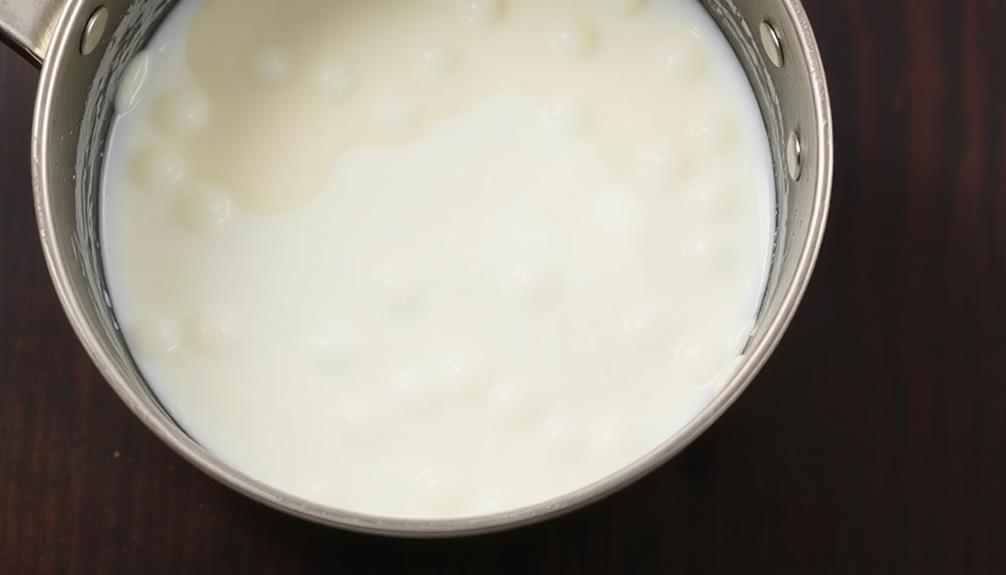
To cook the tapioca pearls, combine them with coconut milk in a saucepan.
You'll want to pour in just the right amount of coconut milk – not too much, not too little. Stir everything together until the pearls are fully submerged.
Now, turn on the heat and let the mixture simmer gently. As it heats up, the tapioca pearls will start to plump up and become nice and soft.
Give it an occasional stir to prevent any sticking. The coconut milk will thicken slightly, creating a creamy, dreamy base for your dessert.
Can you already imagine the sweet, tropical flavors? Keep a close eye as it simmers, adjusting the heat as needed.
Once the pearls are tender and the consistency is just right, it's time to move on to the next step.
Get ready for your taste buds to dance with delight!
Step 4. Add Sugar to Taste
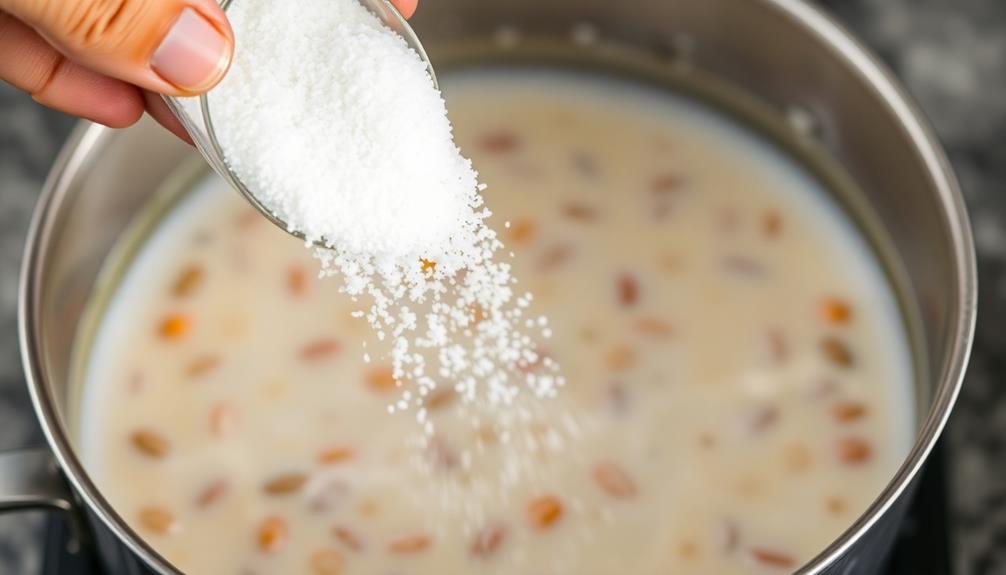
Now that you've got that lovely coconut milk-tapioca base ready, it's time to sweeten things up! Grab that bag of sugar and get ready to make your dessert soup truly irresistible.
Start by adding a small spoonful of sugar, then give it a stir. Taste it and see if it needs a bit more. You want to find that perfect balance – not too sweet, but just sweet enough to make your taste buds dance with delight.
Keep adding sugar a little at a time, tasting as you go, until you've reached the ideal level of sweetness. Don't be afraid to experiment – that's half the fun!
You might even want to try a sprinkle of vanilla extract or a pinch of cinnamon to take the flavor to new heights. With a few simple tweaks, you'll have a dessert soup that's sure to please everyone who tries it.
Step 5. Simmer Until Desired Consistency
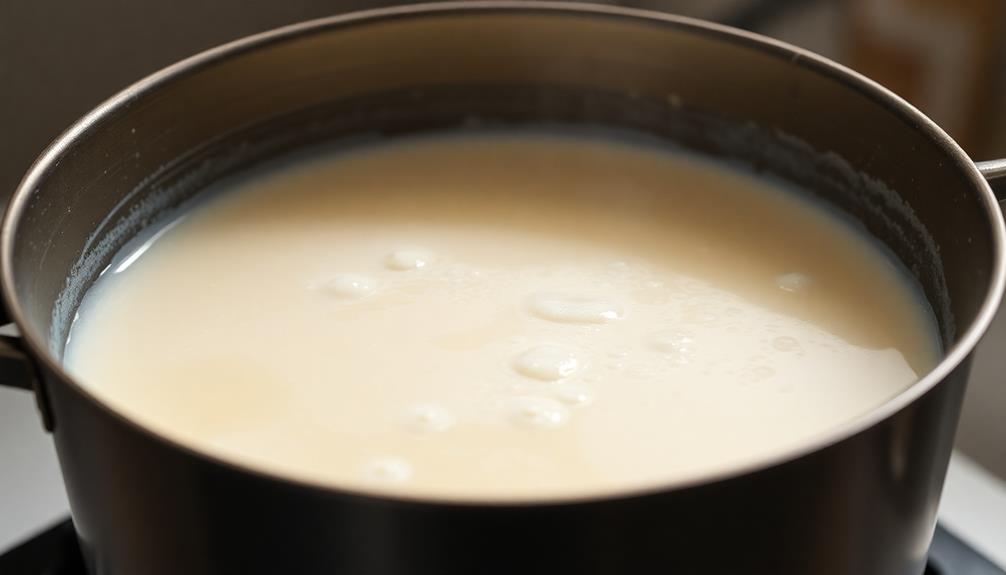
Once you've added the desired amount of sugar, it's time to let the mixture simmer.
Grab your trusty pot and place it back on the stove over medium heat. As the liquid starts to bubble, set a timer and let it gently simmer for about 10-15 minutes. You'll want to stir the mixture occasionally to prevent any sticking or burning on the bottom.
Keep a close eye on the consistency as it simmers. The longer you let it go, the thicker and creamier the Che will become.
Dip in a spoon and give it a taste. If it's still a bit thin for your liking, let it simmer for a few minutes more. When it reaches the delightfully smooth and velvety texture you desire, it's ready to serve.
Grab your favorite bowls and ladle up the warm, sweet soup. Top with a sprinkle of your desired garnishes and enjoy this comforting Vietnamese delight!
Final Thoughts
Che, the sweet dessert soup, has captured the hearts and taste buds of many. This delightful treat is a true delight, with its creamy texture and delicate flavors.
Whether you're enjoying it on a cozy evening or sharing it with friends, Che is sure to put a smile on your face.
One of the best things about Che is its versatility. You can experiment with different ingredients and flavors, making it your own.
Maybe you'd like to add a touch of coconut milk for a tropical twist, or perhaps a sprinkle of toasted nuts for a little crunch. The possibilities are endless!
As you savor each spoonful, let the warmth and sweetness of Che transport you to a world of pure bliss.
This dish isn't just a dessert – it's an experience to be savored and shared.
Frequently Asked Questions
Is Che a Traditional Filipino Dessert?
No, che is not a traditional Filipino dessert. It's actually a sweet dessert soup found in other Southeast Asian cuisines, like Vietnamese and Cambodian, but it's not commonly served in the Philippines.
What Is the Nutritional Value of Che?
The nutritional value of a dish can vary greatly depending on the ingredients used. Without more details about the specific recipe, it's difficult to provide a precise assessment of the nutritional content of che. However, many traditional Filipino desserts tend to be high in carbohydrates and sugars.
Can Che Be Made With Non-Glutinous Rice?
You can certainly make a dessert soup with non-glutinous rice. The texture and flavor will be different, but it can still result in a delicious and satisfying dish. Experiment with different types of rice to find your preferred version.
How Long Does Che Take to Prepare?
Preparing this dish doesn't take too long, usually around 30 to 45 minutes. You'll need to soak and cook the rice, then simmer it with your desired ingredients until the flavors meld.
Can Che Be Served Hot or Cold?
Can the dish be served hot or cold? You can enjoy it either way, depending on your preference and the weather. It's a versatile dessert that can be tailored to your liking. For a cozy winter treat, serve the dish warm with a scoop of vanilla ice cream. In the summer, try serving it chilled with some fresh fruit on top. For the full instructions on how to prepare this dish, see the recipe below.
